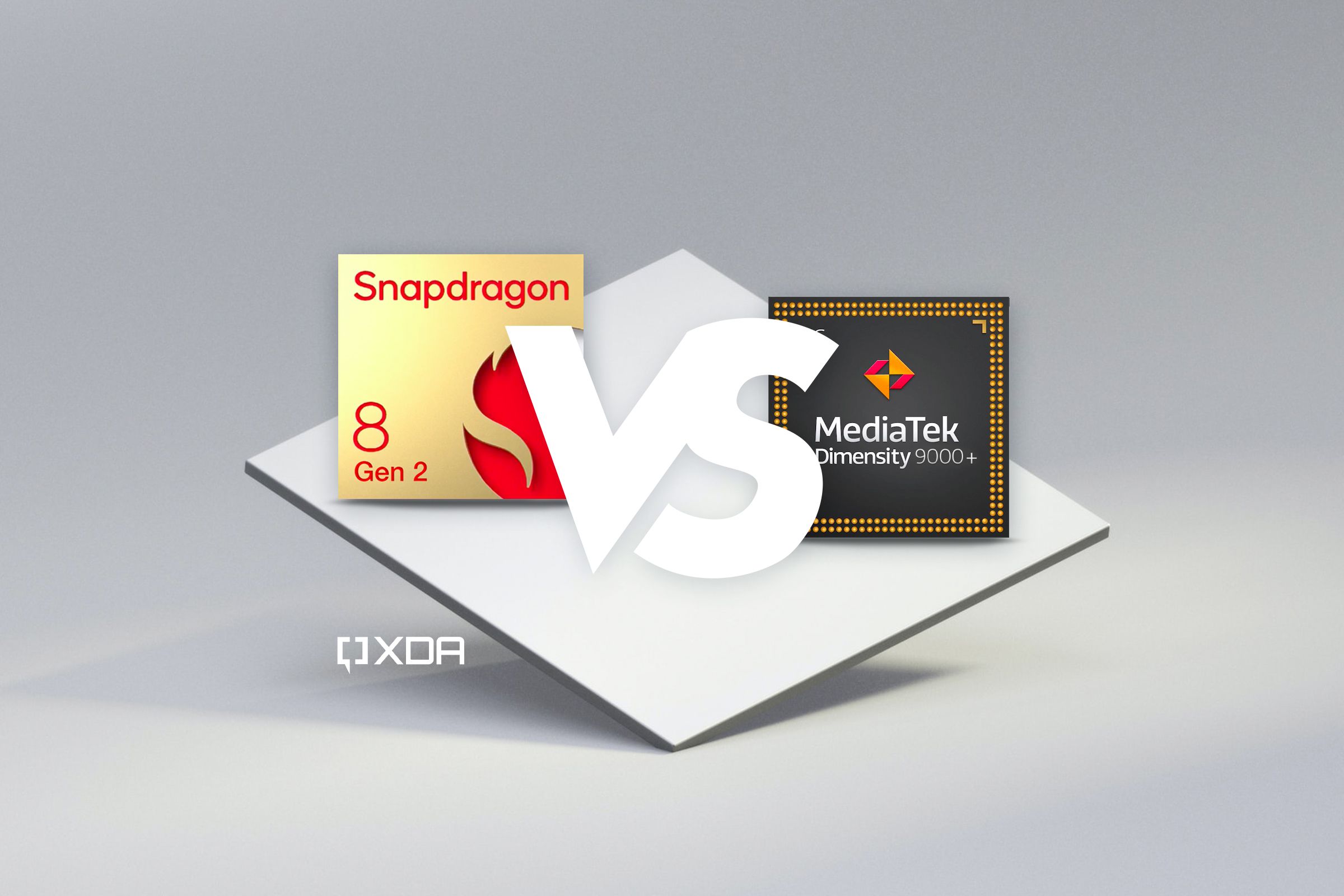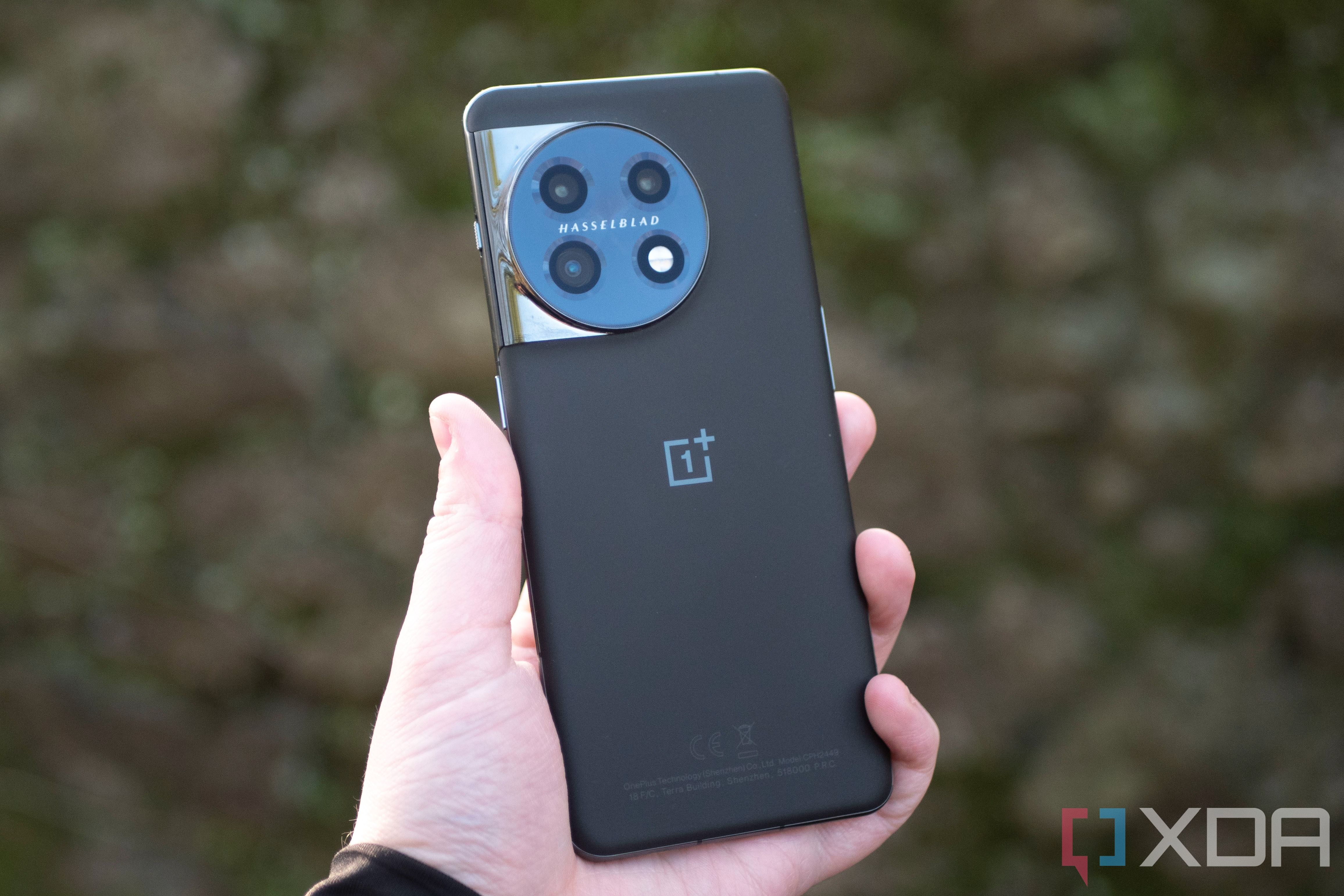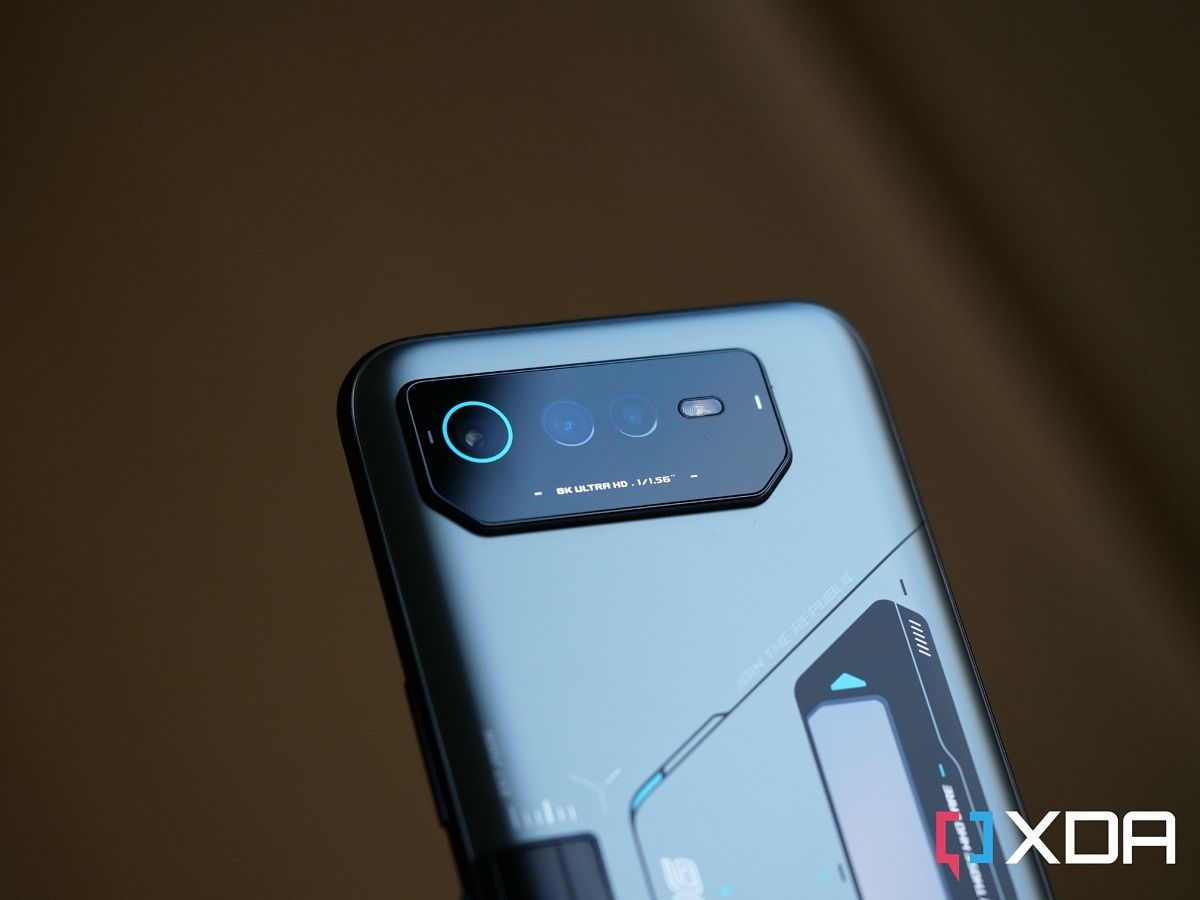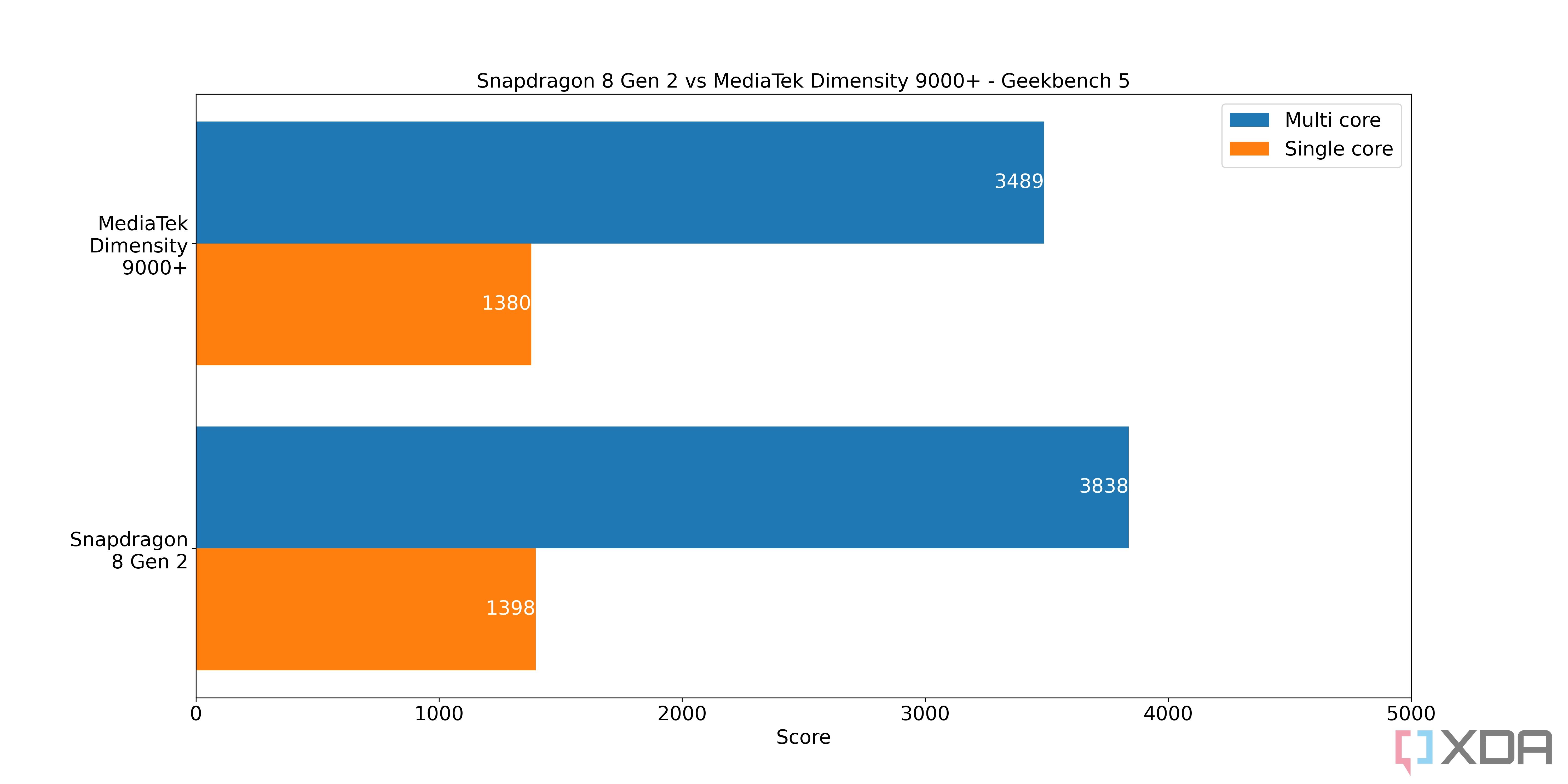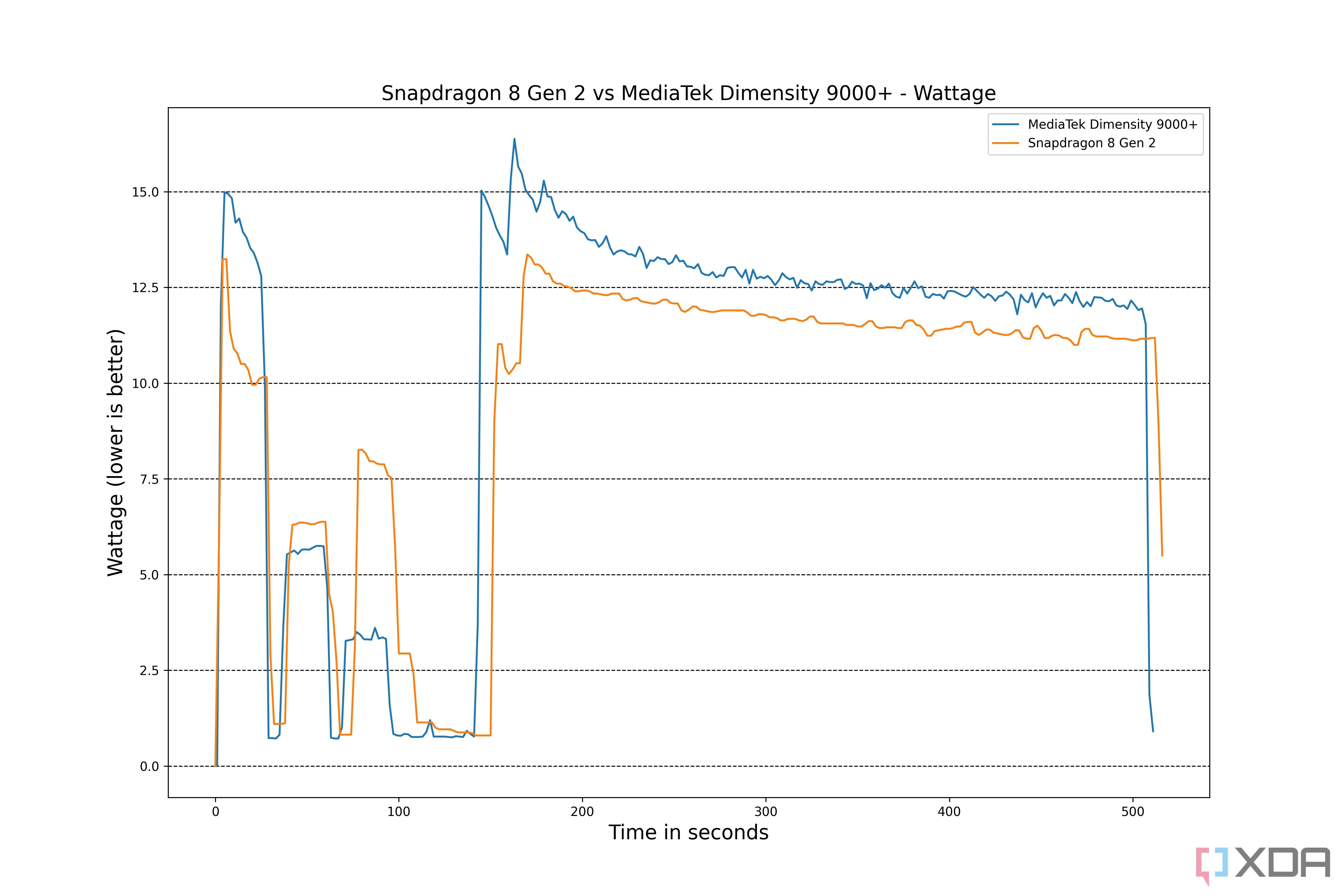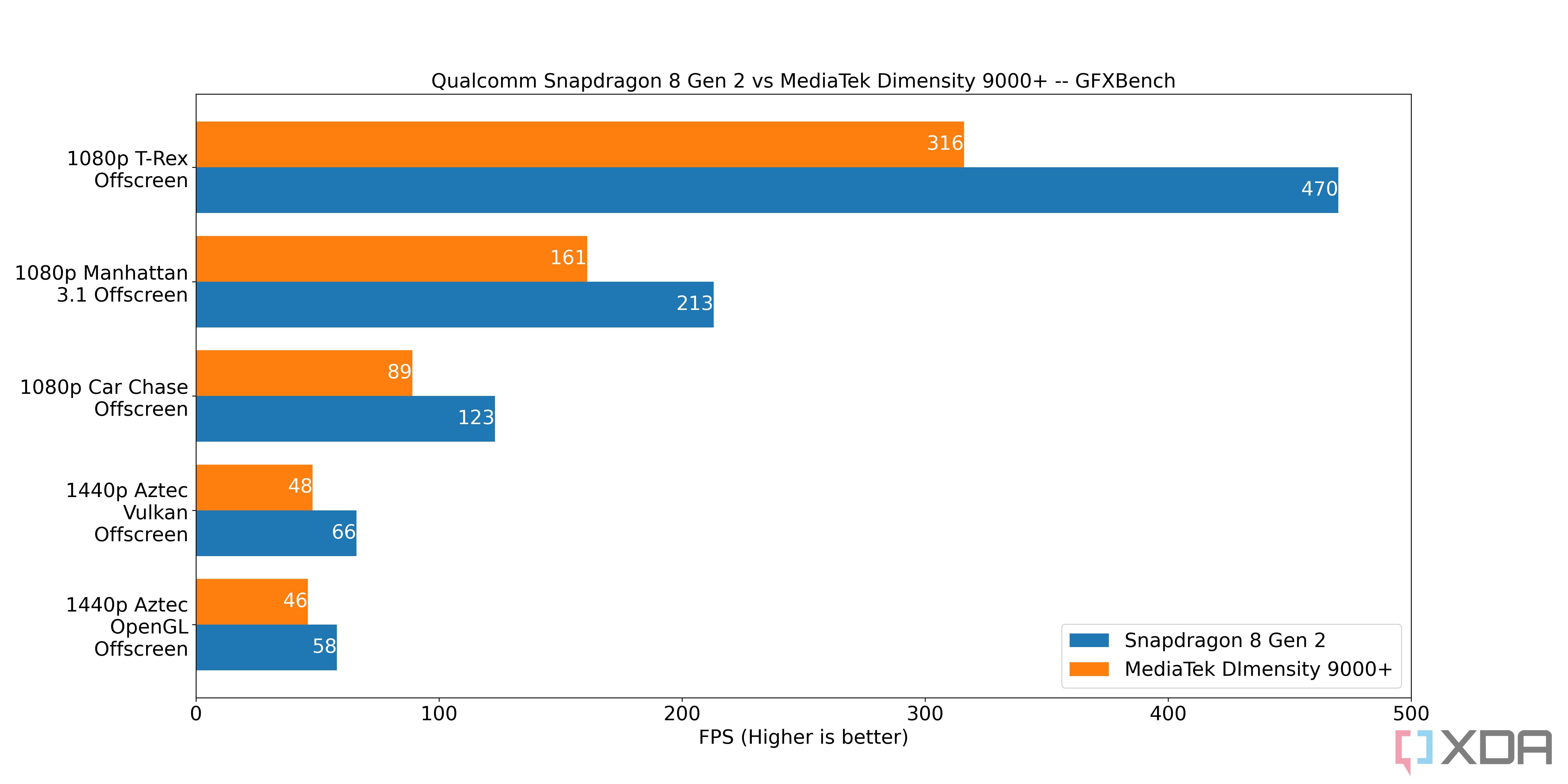The Snapdragon 8 Gen 2 arrived to much fanfare in the Android world, seemingly answering all of last generation's problems. A better CPU and a better GPU in a more power-efficient package can only be a good thing, and after the homerun Qualcomm hit with the Snapdragon 8 Plus Gen 1, we were excited to see how it fared. We intend on putting it to the test against multiple different chipsets, but the one we were most interested in is the MediaTek Dimensity 9000+.
For context, MediaTek was out of the flagship chipset race for a few years now, but with the advent of the Dimensity 9000, the company vowed to compete once again. It even managed to overtake Qualcomm as the best smartphone SoC when pitted against the Snapdragon 8 Gen 1. The Snapdragon 8+ Gen 1 changed things up a bit, but it was still a pretty tight race.
We put the Snapdragon 8 Gen 2 to the test against the MediaTek Dimensity 9000+, and one thing is for certain: Qualcomm is the undisputed GPU king. Things are slightly different on the CPU side, though keep in mind that our testing environment uses the Asus ROG Phone 6D Ultimate, a device that sustains a heavy overclock on both the prime and super cores. As a result, the Dimensity 9000+ remains incredibly competitive when it comes to processing power. Keep in mind that this is last generation's chipset, so we'll be waiting to test the MediaTek Dimensity 9200.
About this comparison: We compared the OnePlus 11 to the Asus ROG Phone 6D Ultimate. Both devices were factory reset, no Google accounts were linked, and Wi-Fi was only enabled to install update packages for benchmarks that required it. Benchmarking applications were installed via adb, and all tests were run on airplane mode with device batteries above 50%. The OnePlus 11 had high performance mode enabled, and the Asus ROG Phone 6D Ultimate had Asus' X Mode enabled. This was done to get the most out of these chipsets and to remove any artificial limitations imposed in software. With X Mode enabled, the MediaTek Dimensity 9000+ sustains a fairly heavy overclock, with the primary core going from 3.2GHz to 3.35GHz, and the three super-cores going from 2.85GHz to 3.2GHz.
Snapdragon 8 Gen 2 vs MediaTek Dimensity 9000+: Spec Sheet
|
Snapdragon 8 Gen 2 |
MediaTek Dimensity 9000+ |
|
|---|---|---|
|
CPU |
|
|
|
GPU |
|
|
|
Display |
|
|
|
AI |
|
|
|
Memory |
LPDDR5X @ 4200MHz, 16GB |
LPDDR5X @ 7500 Mbps |
|
ISP |
|
|
|
Modem |
|
|
|
Charging |
Qualcomm Quick Charge 5 |
N/A |
|
Connectivity |
|
|
|
Manufacturing Process |
4nm TSMC |
4nm TSMC |
Qualcomm Snapdragon 8 Gen 2 vs MediaTek Dimensity 9000+: Fundamental differences
The Qualcomm Snapdragon 8 Gen 2 and MediaTek Dimensity 9000+ chipsets are quite similar, though there are a few key differences in how they're designed, which may lend some explanation as to why they perform the way that they do.
For starters, Qualcomm has one more performance core than the MediaTek Dimensity 9000+. It has a 1+4+3 design, as opposed to the conventional 1+3+4 core layout that has dominated the last couple of generations of flagship SoC. Not only that, but Qualcomm has upgrades in both its prime and performance cores, packing a Cortex-X3 core and two Cortex-A715 cores alongside two Cortex-A710 cores. MediaTek, for context, only has a Cortex-X2 core and three Cortex-A710 cores.
As a result, we expect to see higher multi-core performance from the Qualcomm chipset here, on account of it having an extra performance core. Not only that, but the two Cortex-A715 cores each boast a 20% efficiency improvement over their A710 counterpart, alongside 5% better performance.
In other aspects, Qualcomm doubles down on its AI capabilities. MediaTek's APU struggled to keep up with Qualcomm last generation, and the Snapdragon 8 Gen 2 only paves the way even further. MediaTek's ISP, meanwhile, was on par with the Spectra 680 ISP last time around, and Qualcomm hasn't really made any upgrades here.
Finally, the GPU is where Qualcomm is expected to completely smoke MediaTek. Arm has always struggled with GPUs, though it's most recent one have been improving quite a bit. Nevertheless, the Adreno 730 last generation handily dealt with MediaTek's offering, and the Adreno 740 not only steamrolls ahead but even bests Apple's own Bionic A16 GPU. Qualcomm is the undisputed GPU king right now, and it's not even close.
Benchmarks overview
- GeekBench: A CPU-centric test that uses several computational workloads, including encryption, compression (text and images), rendering, physics simulations, computer vision, ray tracing, speech recognition, and convolutional neural network inference on images. The score breakdown gives specific metrics. The final score is weighted according to the designer’s considerations, placing a large emphasis on integer performance (65%), then float performance (30%), and finally cryptography (5%).
-
GFXBench: Aims to simulate video game graphics rendering using the latest APIs with lots of onscreen effects and high-quality textures. Newer tests use Vulkan while legacy tests use OpenGL ES 3.1. The outputs are frames during test and frames per second (the other number divided by the test length, essentially), instead of a weighted score.
- Aztec Ruins: These tests are the most computationally heavy ones offered by GFXBench. Currently, top mobile chipsets cannot sustain 30 frames per second. Specifically, the test offers really high polygon count geometry, hardware tessellation, high-resolution textures, global illumination and plenty of shadow mapping, copious particle effects, as well as bloom and depth of field effects. Most of these techniques will stress the shader compute capabilities of the processor.
- Manhattan ES 3.0/3.1: This test remains relevant given that modern games have already arrived at its proposed graphical fidelity and implement the same kinds of techniques. It features complex geometry employing multiple render targets, reflections (cubic maps), mesh rendering, many deferred lighting sources, as well as bloom and depth of field in a post-processing pass.
- CPU Throttling Test: This app repeats a simple multithreaded test in C for as short as 15 minutes, though we ran it for 30 minutes. The app charts the score over time so you can see when the phone starts throttling. The score is measured in GIPS — or a billion operations per second.
- Burnout Benchmark: Loads different SoC components with heavy workloads to analyze their power consumption, thermal throttling, and their maximum performance. It uses Android’s BatteryManager API to calculate the watts being used during testing, which can be used to understand the battery drain on a smartphone.
Snapdragon 8 Gen 2 vs MediaTek Dimensity 9000+: Computational workload
We first tested these chipsets' computational abilities. We used Geekbench 5, ensuring that each device was at a normal ambient temperature with airplane mode enabled.
Despite the heavy overclock sustained by the MediaTek Dimensity 9000+, the Snapdragon 8 Gen 2 handily beats it in multi-core performance while just eking out a win in single-core. That's a good sign for Qualcomm, as a non-overclocked version of this chipset would lose by an even further margin, even with the Dimensity 9000+ being a beast in CPU-centric workloads.
Qualcomm Snapdragon 8 Gen 2 vs MediaTek Dimensity 9000+: Power efficiency
Burnout Benchmark allows us to easily measure the power consumed by a chipset in a smartphone. Andrey Ignatov, the app's developer, told us to run the app with a fully charged device on the lowest brightness and with airplane mode enabled, so, all the data collected here is under those conditions. Ignatov told us the following tests are run on different components of the SoC as part of Burnout Benchmark:
- GPU: Parallel vision-based computations using OpenCL
- CPU: Multi-threaded computations largely involving Arm Neon instructions
- NPU: AI models with typical machine learning ops
The maximum wattage of the Dimensity 9000+ under these conditions was an astounding 16.38W, especially when compared to the maximum wattage of the Snapdragon 8 Gen 2 at 13.36W. Things look even worse when comparing the CPU and GPU output, as it becomes clear that the Dimensity 9000+ is simply outclassed by the Snapdragon 8 Gen 2.
The CPU of the MediaTek Dimensity 9000+ does a better job over a long period of time, though keep in mind again that it is overclocked far beyond the normalcy of this chipset. It only marginally does better, and the peak of the Snapdragon 8 Gen 2 still manages to beat it.
However, in the GPU, it's simply no context. Qualcomm completely and utterly dominates MediaTek, and there's no other way to put. These numbers are simply ludicrous.
|
Snapdragon 8 Gen 2 (Peak) |
MediaTek Dimensity 9000+ (Peak) |
Percentage |
|
|---|---|---|---|
|
CPU FPS |
18.39 |
17.19 |
6.9% better CPU performance in Snapdragon 8 Gen 2 |
|
GPU FPS |
27.41 |
18.39 |
49% better GPU performance in Snapdragon 8 Gen 2 |
|
Maximum wattage |
13.36 |
16.38W |
22.4% increase in energy usage in MediaTek Dimensity 9000+ |
Qualcomm Snapdragon 8 Gen 2 vs MediaTek Dimensity 9000+: Graphics
GFXBench is an application that can test the graphical capabilities of a smartphone’s GPU through a number of different tests. We ran five different tests here, with the most computationally taxing being the 1440p Aztec tests.
While it appears that the MediaTek Dimensity 9000+ struggles with OpenGL workloads, it finds Vulkan a lot easier. The percentage difference between the OpenGL tests in the form of the T-Rex offscreen test and Manhattan 3.1 vs the likes of the 1440p Aztec Vulkan test are vastly different. However, it's clear that Qualcomm's massive gains in GPU are showing strong here.
Qualcomm Snapdragon 8 Gen 2 vs MediaTek Dimensity 9000+: CPU Throttling Test
CPU Throttling Test is a great way to test how long a chipset can sustain its performance. While it is heavily device-dependent (it also relies on the cooling methods and software throttling introduced by OEMs), it's a decent way to see how much heat is output by a chipset and how much it can maintain a baseline level of performance when hot.
From the above, you can see that both chipsets perform neck and neck on the basis of pure computational output and sustained performance.
Qualcomm maintains dominance, particularly in its GPUs
The Qualcomm Snapdragon 8 Gen 2 is the best Android SoC out there right now, and it completely smokes the MediaTek Dimensity 9000+. We pretty much expected that to be the case given that the Snapdragon 8 Plus Gen 1 also beat it, but still, it shows just how much Qualcomm is leaping ahead of the rest of the competition.
We're not sure what to expect from the next MediaTek Dimensity flagship chipset, but it has a formidable opponent in its sights. I can't imagine a world where MediaTek manages to make a 49% GPU improvement from one generation to the next in order to catch up, and even those CPU gains may prove tough without significantly improving power draw.
MediaTek is still doing incredibly well with what it has though, but it's exciting just how powerful Qualcomm's own chips are. It's an incredible time to be a smartphone fan, and with competition heating up even against Apple, 2023 is shaping up to be an exciting year.

